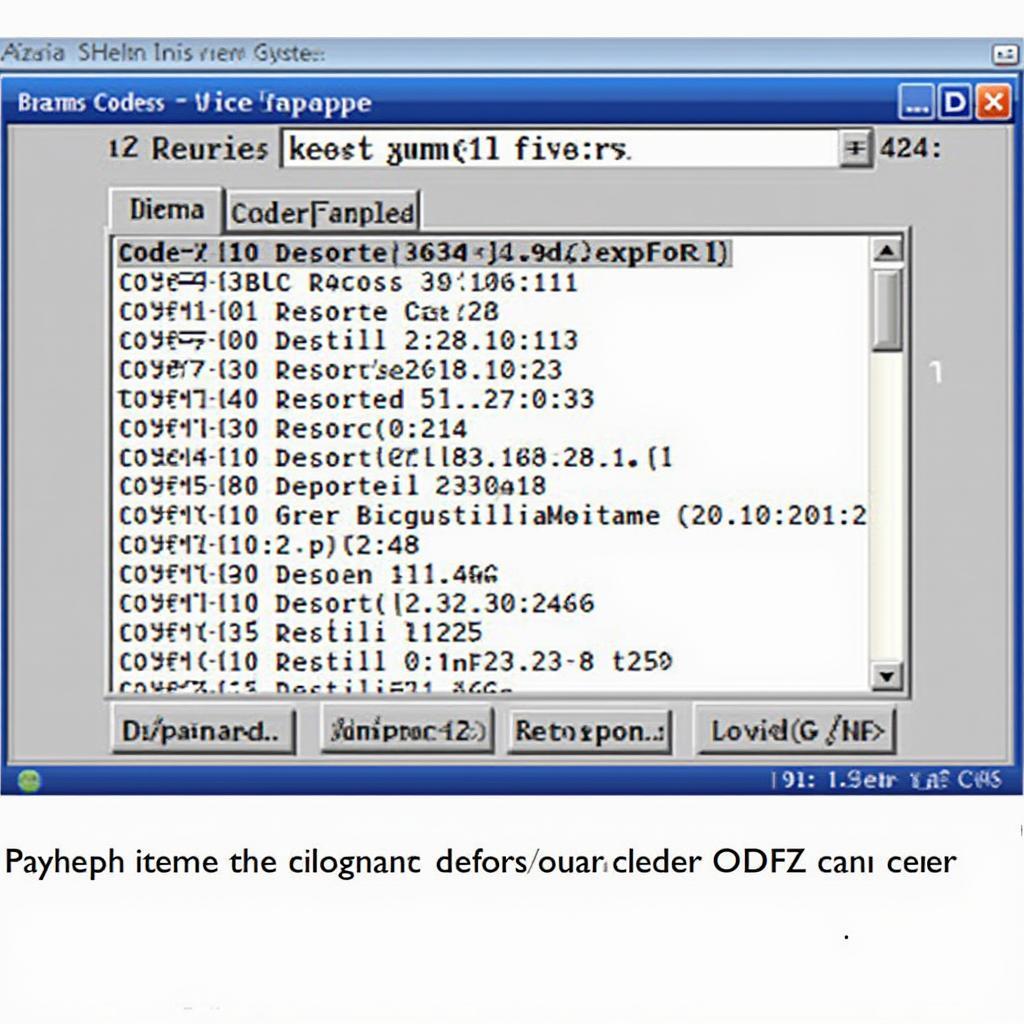Understanding your Ford Escape’s OBD2 codes is crucial for maintaining its performance and longevity. Whether you’re a seasoned mechanic or a DIY enthusiast, this guide will equip you with the knowledge to interpret those cryptic codes and address potential issues effectively.
Diagnosing car problems can be daunting, especially when faced with a blinking check engine light. Fortunately, your Ford Escape, like all modern vehicles, is equipped with an OBD2 (On-Board Diagnostics II) system. This system acts as your car’s internal communication network, constantly monitoring various sensors and systems. When a problem arises, it generates a specific OBD2 code, providing valuable clues about the underlying issue. Accessing these codes and understanding their meaning empowers you to take informed action. You can often find helpful resources like the ones discussing 2011 ford escape obd2 codes.
Decoding Ford Escape OBD2 Codes
OBD2 codes are standardized, consisting of a letter and four numbers. The letter indicates the system affected (e.g., P for Powertrain, B for Body, C for Chassis, U for Network). The numbers pinpoint the specific problem within that system. For example, a P0420 code suggests a problem with the catalytic converter system efficiency below threshold.
Common Ford Escape OBD2 Codes
Some common Ford Escape OBD2 codes include P0171 (System Too Lean Bank 1) and P0174 (System Too Lean Bank 2), which often indicate issues with the air-fuel mixture. Another frequently encountered code is P0420 (Catalyst System Efficiency Below Threshold Bank 1), signifying a potential catalytic converter problem. Additionally, P0300 (Random/Multiple Cylinder Misfire Detected) indicates engine misfires, a serious issue that requires immediate attention.
Understanding these codes can help you pinpoint the root cause of your vehicle’s problems and determine the necessary repairs. It can also save you time and money by avoiding unnecessary diagnostic tests. Remember, accessing OBD2 codes requires an OBD2 scanner.
Troubleshooting Ford Escape OBD2 Codes
Once you’ve retrieved the OBD2 codes from your Ford Escape, the next step is to interpret them and troubleshoot the underlying issue. A reliable online OBD2 code lookup tool can provide detailed descriptions of each code and suggest possible causes. However, it’s essential to remember that OBD2 codes are just starting points. They point you in the right direction but don’t always provide a definitive diagnosis. Further investigation is often needed to identify the exact problem.
Using an OBD2 Scanner on Your Ford Escape
Using an OBD2 scanner is straightforward. Locate the OBD2 port (usually under the dashboard on the driver’s side), plug in the scanner, turn on the ignition, and follow the scanner’s instructions to retrieve the codes. Some advanced scanners can even provide live data streams from various sensors, allowing you to monitor your engine’s performance in real-time. For instance, understanding how to clear obd2 codes 2015 ford escape is invaluable. Further information on Ford OBD systems can be found in resources like 2005 ford obd2 or 2017 ford obd2.
Why are Ford Escape OBD2 Codes Important?
Ford Escape OBD2 codes are essential for several reasons. They enable you to:
- Identify potential problems early: Catching issues early can prevent them from escalating into more significant and costly repairs.
- Save money on diagnostics: By understanding the codes, you can often avoid unnecessary trips to the mechanic for diagnostic tests.
- Improve fuel efficiency: Addressing issues indicated by OBD2 codes can optimize fuel economy.
- Reduce emissions: Fixing emission-related problems helps protect the environment.
- Maintain your vehicle’s value: Regular maintenance based on OBD2 code readings can prolong your car’s lifespan and maintain its resale value. If you have a hybrid, resources such as the one focusing on obd2 data link connector 2008 escape hybrid are very helpful.
Conclusion
Understanding ford escape obd2 codes is essential for every Ford Escape owner. By utilizing an OBD2 scanner and interpreting the codes correctly, you can effectively diagnose and address potential problems, saving time and money while maintaining your vehicle’s optimal performance.
FAQs
-
What does the check engine light mean? The check engine light illuminates when the OBD2 system detects a problem.
-
Where is the OBD2 port located? The OBD2 port is typically located under the dashboard on the driver’s side.
-
How do I clear OBD2 codes? Clearing codes requires an OBD2 scanner.
-
Can I drive with the check engine light on? It’s best to diagnose and address the issue promptly.
-
Are all OBD2 scanners the same? No, scanners vary in features and capabilities.
-
What should I do if the check engine light comes back on after clearing the codes? Further diagnosis is necessary to pinpoint the underlying problem.
-
Where can I find reliable information about Ford Escape OBD2 codes? Online resources and repair manuals can provide valuable information.
For support, contact us via WhatsApp: +1(641)206-8880, Email: [email protected] or visit us at 789 Elm Street, San Francisco, CA 94102, USA. We have a 24/7 customer support team.


